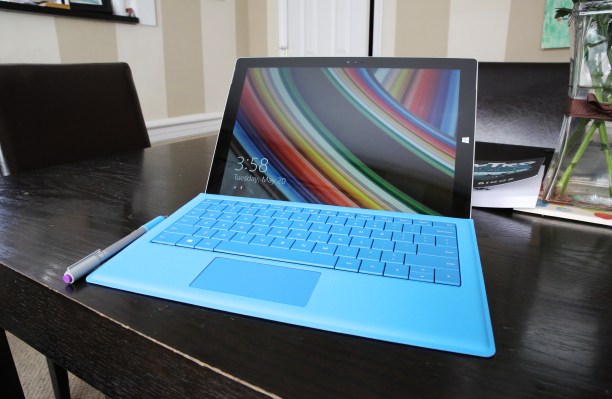Microsoft is gearing up to begin shipping its Surface Pro 3 tablet, and many have already had a chance to test out the latest in tablet/laptop hybrids. One early tester is Penny Arcade’s Mike Krahulik (aka Gabe) who was a huge fan of the Surface Pro 2, because with the stylus, it was an awesome digital artist tool for hand-drawn creations. Gabe wasn’t so impressed with the Surface Pro 3. He said it introduced some lag into the equation for menu navigation and drawing (I’ve tried it myself and I found the same thing), and which put the home button in a new, much more inconvenient location.
Microsoft took this feedback to heart — so much so that they brought Gabe in to provide feedback to a team of Surface Pro 3 product engineers and designers. He offered his thoughts on the home button placement, general performance issues and the way the pressure sensitivity feels “off.” The team took vigorous notes while they were doing this, and presented Gabe with a sampling of the various Surface Pro 3 hardware configurations. After about a week, they came to the Penny Arcade offices and showed him some modified devices that included fixes, such as a temporary disabling of the Windows Home hardware button when the pen is in use on the screen.
The Surface team also built an app that could change the pressure curve to suit an individual artist’s style, which is impressive work for just a few days’ time. From basically every review I’ve seen so far, and my own hands-on experience, the one thing holding the Surface Pro 3 back from being a standout device for dedicated digital artists were these flaws, most of which I’d assumed were the result of going from tech provider Wacom to N-Trig, and dropping from 1,024 levels of pressure sensitivity to just 256.
Microsoft seems dedicated to helping even this small niche market find the best experience possible with the Surface Pro 3, and that’s impressive in a mass-market economy. Plus, if Microsoft is serious about tackling niche buyers, it can continue to charge a premium for its devices, since professionals consider it worth the extra expense.
The creative pro market is also the group upon which Apple built its early reputation, before it gained the popularity that it currently enjoys with a wider audience. Microsoft paying attention and delivering a specific service to that group signals a strategy that involves not just winning customers, but also building an image around Surface hardware that encroaches on territory long-held in esteem by its rivals. That, or it just cares about making a nice piece of hardware, both of which are respectable goals.
